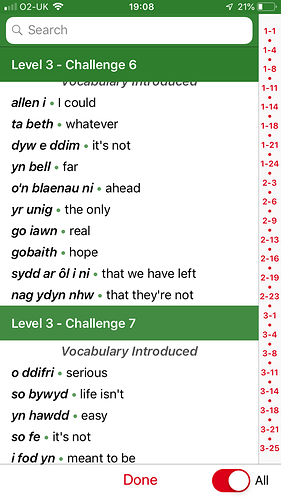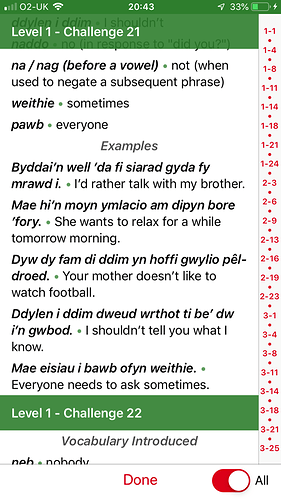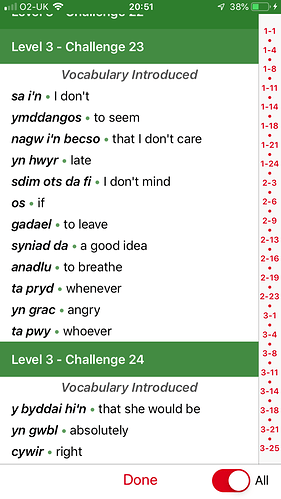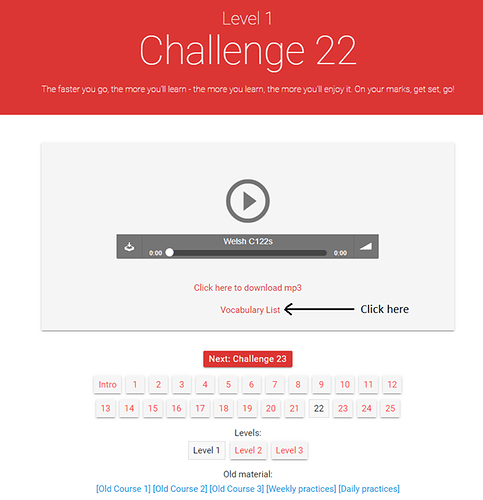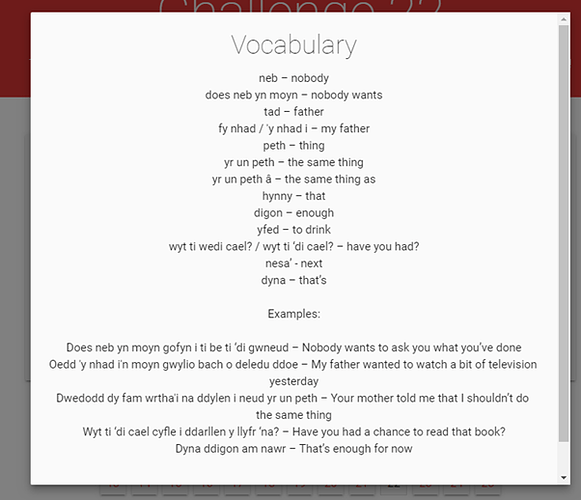 eep, whats the na that changes to nag then? I just assumed it was the same
eep, whats the na that changes to nag then? I just assumed it was the same
Yes, I was just about to reply too.
In the southern course nag is used in place of nad ie to mean ‘that not’. So I believe what you said is correct @santiago_mauricio - either that or one of my learning tectonic plates is about to shift under me (although that would be ok, of course )
Rich 
@garethrking I think you’re gonna have to help me with this one - I’m sure you have a more straightforward way of explaining it than the explanation I’ve been trying to write - in trying to keep it simple, it’s getting more confusing! 
maybe this is over-simplifying (because nag pops up in other uses too, which is where I was confusing myself trying to explain without confusing anyone else), but until Gareth kindly jumps in and rescues me - ydyn is a form of bod that starts with a vowel so has a nag, not a nad.
Well the course notes there appear to be slightly wrong, or there’s a typo - that they’re not is nad ydyn nhw, while nag ydyn nhw means are they? (tag question on NEG statement).
Dw i’n siwr nad ydyn nhw’n rhy gostus - I’m sure that they’re not too expensive
Tydyn nhw ddim yn rhy gostus i ti, nag ydyn nhw? - They’re not too expensive for you, are they?
So basically the negative that is na(d), while the question tag is na(g).
In some regions, by the way, you also sometimes hear nad sy for sy ddim:
Pobol nad sy’n siarad Cymraeg - People who don’t speak Welsh (= Pobol sy ddim yn siarad Cymraeg).
The academics and the language police practically faint at this - let them, it’s awfully common among native speakers and therefore actually makes you sound particularly authentic.
Then there’s also na = than - this is nag before vowels:
Mae platinwm yn ddrutach nag aur - Platinum is costlier than gold
And there’s also the nad which is always nad (that sounds like something from Monty P and the Holy Grail, doesn’t it? - ‘We seek the Nad which is always Nad!’) - the one used for negative that in focused sentences:
Dw i’n siwr nad Gerwyn dorrodd y ffenest - I’m sure that it wasn’t Gerwyn who broke the window.
This is REALLY good fun! 
I think that the southern course uses nag but I never say never…we can ask @Deborah-SSi or @Iestyn to be sure.
To be honest the existence of variations and permutations and things I couldn’t find in a book which initially surprised me (and troubled me somewhat!) - have ended up being a big part of what I’ve taken away…
Rich ![]()
There are sentences in the southern course where I would always write “nad” as that’s what I’ve been taught in traditional courses, but in the course notes it’s written as “nag” as that’s what it sounds like in casual speech, e.g. dwedon nhw wrthon ni nag o’n nhw’n moyn esbonio beth oedd yn digwydd, in Level 2 Challenge 9. That just happens to be one that I happen to have written down as an example, but yes, there are more in the course notes.
I tried listening out for it on Pobol y Cwm while I was having breakfast, as I know I’ve heard it used like that occasionally in that programme, but it wasn’t easy to eat and listen intently so I didn’t spot anything 
Perhaps what we need is for @iestyn and @garethrking to have a little discussion about it here and clarify it for anyone who’s interested?
Hi Dee,
Thanks for clarifying. I think the main thing is for those who have done the southern course that there hasn’t been some horrible misunderstanding 
There have been other things like the conditional endings which are difficult to match up to a book ond fel na ma yn de fe?!
Rich 
Well it is of course possible that this is a S dialect variation - I can see how nag might have been generalised to include (and displace) nad - languages do do this, after all, and there isn’t a wild difference in how they sound, is there? Very S if so, I sense - but that’s OK of course.
I’d better have a little listen to Pobol y Cwm myself and see if I can hear them using it, hadn’t I?
Hello Rich. May I ask where your screenshots are from because the course notes are different from the ones I have? I have the android app where there are no course notes so I view them on my laptop.
Hello @helen-gwyn-jones
On my laptop I see the challenges like this. There is a link to click to show the vocabulary.
Sue
Hi Helen,
They are from the iPhone app…they are also from the southern course which would be different from the Northern version…I’m not sure which course you are doing and whether either of these things accounts for the difference. 
I have never compared what’s on my phone with what’s available via a browser - I would expect the content to be the same! ( even if it’s presented differently) but I might have a quick look later to check. 
Rich 
Thanks Anna - that is what I currently do. I’ve now seen that the vocab is available on the IOS app but not on the android one which is where Rich gets it. However, I’m perplexed that the content is different!
Thanks Rich. Shame that the vocab isn’t available on the Android app too. I am doing the Southern course so that’s not the difference - I just noticed the odd grammar point on your screenshots which I hadn’t seen and could do with knowing! Wondered if they’d been updated since I downloaded them but that’s not the case. Should I ask @aran?
…possibly @Deborah-SSi - as I think I have seen the odd post from her in relation to changing the notes.
Dee, do you know if there is (supposed to be) a difference between the course notes in the iOS App and the browser?
Rich 
I had never noticed (like @rich) , but I happen to have here the iOS app an the file with the vocabulary list copied from the website and it’s true in the first challenges, some of the examples are different.
(They seem identical in later challenges, though)
They were developed separately I believe. I think Aran did the original web version, then when Lewie developed the iOS app, he just put examples in that he thought useful. Someone at some stage commented on how useful they were, so I copied a lot of them into the website Vocab Lists.
Thanks, Dee, for clearing up the mystery at least. Luckily my partner has an ipad and I’ve just had a look and can access the alternative vocab lists that way.
